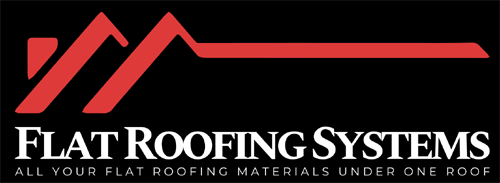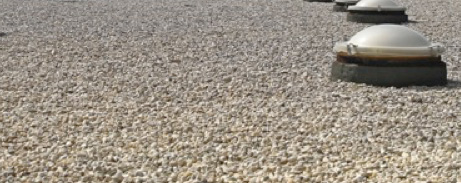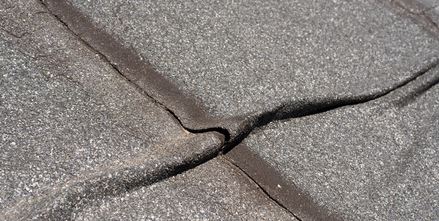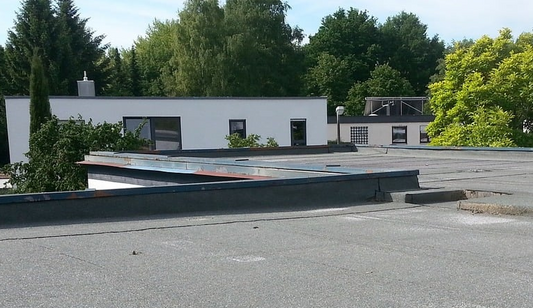You're considering a GRP fibreglass roofing system, a durable and cost-effective option that can last up to 30 years with proper maintenance.
But before you make a decision, it's vital to understand the benefits and installation process of GRP roofing.
You'll want to research and shortlist reputable contractors, verifying their certifications, licenses, and customer reviews. You'll also need to select the right materials, guarantee proper surface preparation, and conduct quality control checks during installation.
By doing your due diligence, you'll be well on your way to a successful GRP roofing project that meets your needs - and there's more to learn about making the most of this investment.
Key Points
- GRP roofing is a durable and cost-effective option, lasting 20-30 years with proper maintenance, and is suitable for various applications.
- Regular inspections, cleaning, and application of a GRP roof sealant can extend the lifespan of the roof and prevent damage.
- When selecting a GRP contractor, research and verify their reputation, certifications, licenses, and warranty to ensure a successful installation.
- High-quality materials, such as premium-grade resins and topcoats, are essential for the durability and longevity of the GRP roof.
Understanding GRP Roofing
When considering a new roofing option, it's vital to understand the ins and outs of GRP roofing, a popular choice for homeowners and businesses alike due to its impressive durability and cost-effectiveness.
GRP roofing, also known as fibreglass roofing, is composed of fibreglass matting and resin, providing a strong and waterproof barrier against the elements.
This makes it an ideal option for various applications, including flat roofs, sheds, and industrial buildings.
One of the biggest advantages of GRP roofing is its long lifespan. With proper maintenance, a GRP roof can last for many years.
Regular inspections, cleaning, and application of a GRP roof sealant can extend its lifespan even further.
You'll also appreciate its high durability, which allows it to withstand harsh weather conditions, corrosion, and chemical exposure.
This versatility makes GRP roofing a great choice for different roofing needs.
Selecting the Right Materials
You'll need to specify the right materials for your GRP fibreglass roofing project, as the quality of these components directly impacts the roof's performance, longevity, and overall appearance.
When it comes to resins, premium-grade options are essential for protecting your roof from weather damage, UV rays, and chemical exposure. These high-quality resins guarantee your GRP roof lasts for many years and functions at its best.
Topcoats are another pivotal component, and you should opt for premium grades that provide better protection and maintain the roof's appearance over time.
It's imperative to work with suppliers who offer premium-grade resins and topcoats, as these materials meet industry standards and specifications. Using high-quality materials reduces the risk of defects, repairs, and replacements, guaranteeing your GRP roof lasts for many years. Complete GRP roof kits are available now too.
Don't compromise on materials, as this can lead to costly issues down the line. By specifying the right materials, you'll get a GRP roof that meets your expectations and provides long-term value.
Installation and Quality Control
With your premium-grade materials in hand, it's time to focus on the installation process, where meticulous attention to detail certifies your GRP roof meets the highest standards of quality and performance.
You'll want to verify your chosen installer has extensive experience with GRP fibreglass roofing systems. They should conduct a thorough site survey to identify any potential issues before commencing work.
During installation, it's vital to maintain a clean and dry environment to prevent contamination and guarantee a strong bond between the GRP layers. Your installer should apply a consistent, even coat of resin, carefully following the manufacturer's instructions.
Quality control checks should be performed at each stage of the process to detect any defects or imperfections. You should also receive regular updates and inspections to guarantee your roof meets the required standards.
GRP Roofing Overview
GRP roofing is a versatile and durable material that's gaining popularity among homeowners and businesses alike. You're likely considering GRP roofing for its reputation for being long-lasting and cost-effective. And you're right - GRP roofing is composed of fibreglass matting and resin, making it a reliable choice for various roofing applications, including flat roofs, sheds, and industrial buildings.
As you weigh your options, it's vital to know that a GRP roof can last for many years with proper maintenance. Regular inspections, cleaning, and application of a GRP roof sealant can extend its lifespan. Plus, GRP roofing is resistant to corrosion and can withstand chemical exposure, making it suitable for buildings in harsh environments.
One of the significant advantages of GRP roofing is its ease of installation and repair. It can be used to replace traditional roofing materials, such as felt, metal, asphalt, concrete, and EPDM, in many cases. With its durability, versatility, and low maintenance requirements, it's no wonder GRP roofing is becoming a popular choice for many.
Benefits of GRP Roofing
GRP roofing offers a multitude of benefits that make it an attractive option for homeowners and businesses, including its exceptional durability, cost-effectiveness, and versatility in various roofing applications.
You'll appreciate its ability to withstand harsh weather conditions, making it perfect for areas prone to extreme weather. Plus, it's a cost-effective option compared to other roofing materials, with a lower upfront cost and reduced maintenance needs over time.
You won't have to worry about corrosion or chemical exposure, as GRP roofing is resistant to both, making it suitable for industrial buildings and areas with high levels of pollution.
You'll also appreciate the versatility of GRP roofing, which can be used for flat roofs, sheds, and industrial buildings, and can be molded to fit complex shapes and designs.
Installation is a breeze, taking only 1-2 days for a standard roof, and repairs are quick and easy, without requiring a complete roof replacement.
With GRP roofing, you can enjoy peace of mind knowing your roof is durable, low-maintenance, and adaptable to your specific needs.
Selecting a GRP Contractor
Now that you've decided on GRP roofing, finding the right contractor is vital to guaranteeing your new roof meets your expectations and lasts for years to come.
You'll want to research and shortlist potential contractors with a proven track record of successful GRP installations. Check their reputation and customer reviews on platforms like Trustpilot or Google Reviews to get an idea of their work quality and customer satisfaction.
Get multiple quotes from different contractors to compare prices, services, and warranties. When comparing quotes, don't forget to verify the contractor's warranty and after-sales service. Find out about their response time, repair policy, and customer support.
Maintaining a GRP Roof
By investing time and effort in regular maintenance, you can substantially extend the lifespan of your fibreglass roof and prevent costly repairs down the line. A well-maintained GRP roof can last for decades, providing you with peace of mind and protection from the elements.
Regularly inspect your roof for signs of damage, such as cracks, blisters, or worn-out coatings.
Clear debris and dirt from the roof surface to prevent water accumulation and damage.
Repair damaged areas promptly to prevent water ingress and further damage.
Apply a new coat of sealant every 5-10 years to maintain the roof's waterproofing properties.
GRP Vs Other Roofing Materials
When weighing your roofing options, you'll likely find yourself comparing GRP fibreglass to other popular materials, each with its unique set of benefits and drawbacks.
One key advantage of GRP roofing is its longer lifespan compared to EPDM roofing, lasting 20-30 years on average versus EPDM's 10-20 years. GRP roofing is also more resistant to corrosion than asphalt roofing, thanks to its fibreglass matting and resin composition.
In terms of cost, GRP roofing is a more affordable option compared to metal sheet roofing, with an average cost of £40-£70 per square meter versus metal's £70-£100 per square meter.
Research and Planning
As you've weighed the benefits of GRP fibreglass roofing, it's time to shift your focus to finding the right contractor and materials for your project, starting with thorough research and planning. This vital step will guarantee you get a high-quality GRP roof that meets your needs and budget.
Verify contractor credentials: Check if the contractor is certified and trained in GRP roofing installation, and ask for references from past clients.
Get multiple quotes: Compare prices and services from different contractors to find the best fit for your project.
Check insurance coverage: Confirm the contractor has liability insurance and workers' compensation insurance to protect against accidents or damages.
Learn about the installation process: Understand the steps involved in GRP roof installation, including preparation, application, and finishing.
Surface Preparation and Installation
Properly preparing the surface is essential to securing a strong bond between the GRP roofing system and the substrate, so take the time to thoroughly clean and degrease the area before installation. You don't want any dirt, grime, or old adhesives getting in the way of a secure fit. Make sure the surface is dry, smooth, and even, as any imperfections will show through the finished roof.
Four pivotal steps to follow for a successful installation:
- Remove old roofing materials: Take off any existing roofing materials, including shingles, tiles, or old GRP systems. This will give you a clean slate to work with.
- Clean and degrease the surface: Use a degreaser to remove any dirt, oil, or other substances that might affect the bond between the GRP and the substrate.
- Check for damage or rot: Inspect the substrate for any damage or rot and make repairs as needed.
- Apply a compatible primer: Use a primer specifically designed for GRP roofing to establish a strong bond between the system and the substrate.
Quality and Performance
With a premium GRP roofing system, you can expect exceptional quality and performance, thanks to the use of high-grade materials and expert installation techniques.
The supplier should offer high-quality materials, including premium-grade resins and topcoats, to guarantee the longevity and performance of the GRP roof. These premium-grade resins provide better protection against weather damage, UV rays, and chemical exposure, safeguarding a longer lifespan for the GRP roof.
High-quality topcoats can maintain the roof's appearance over time, with premium topcoats offering superior protection and durability.
When you choose a high-quality GRP roof, you can expect it to last for many years with proper maintenance. In fact, some GRP roofs can last up to 30 years or more.
The correct materials and installation techniques are vital to achieving peak quality and performance from a GRP roof. By investing in a premium GRP roofing system, you'll enjoy a durable, long-lasting, and low-maintenance roofing solution that will protect your property for years to come.
Post-Installation Care
Regular maintenance is crucial to extending the lifespan of your GRP roof, and it starts with routine inspections to identify potential issues before they become major problems. By doing so, you can prevent minor issues from escalating into costly repairs or even replacements.
- Inspect and clean regularly: Regularly inspect your GRP roof for signs of damage or wear, and clean the roof regularly to prevent debris buildup and guarantee its longevity.
- Seal and protect: Apply a GRP roof sealant to extend its lifespan, which can be done every 10-15 years depending on the quality of the topcoat and environmental conditions.
- Repair promptly: Repair any cracks or damages promptly to prevent further damage, as neglecting repairs can lead to costly replacements and compromise the structural integrity of the roof.
- Coat for added protection: Consider applying a GRP roof coating for added protection against UV rays, weathering, and chemical exposure, which can be done every 5-10 years depending on the roof's exposure to harsh conditions.
Rounding Up
You've made it to the end of this GRP fibreglass roofing buyer's guide, and by now, you're well-equipped to make an informed decision.
You know what to look for in a contractor, how to select the right materials, and what to expect during installation.
A quality GRP roof requires proper surface preparation, skilled installation, and regular maintenance.
With this knowledge, you'll be enjoying your new roof for years to come.




